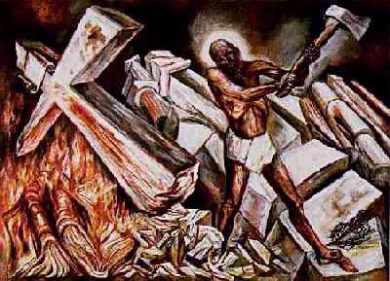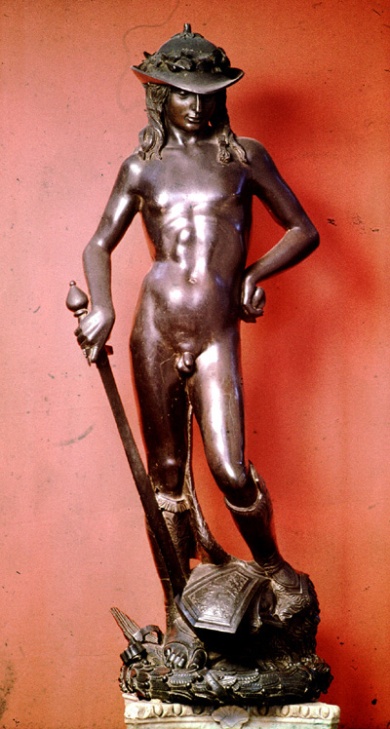Women have been campaigning and fighting to have their voices heard for hundreds of years. However, organized feminism began with the first women’s conference held in Seneca Falls, New York. This movement progressed from the ideas of social reform movements such as the Abolition of Slavery and the Temperance movement. Throughout the following years, women were no longer willing to be pigeonholed as being simply housewives. No longer were they willing to merely take care of their spouse, kids, and the home. Women began to voice their opinions about voting, divorce, education, work, and property rights. During the 60s and 70s, after WWII, more and more women began entering college and the workforce. This was also a time of sexual liberation for women. The introduction of the birth control pill completely changed traditional beliefs about family and gender roles. Feminism, not surprisingly, made its way into art. Artists took bold chances in depicting the form of a woman. Two artists of the Post-Modern Art era that brought a shock factor to art were Carolee Schneemann and Judy Chicago. These two women were not afraid to present the body of a woman and all of its glory. In this blog I will focus on two works specifically. However, I will include some more pictures of other works created by these two artists.
Carolee Schneemann was born in Pennsylvania on October 12, 1939. She received her Bachelor of Arts degree from Bard College and her Master’s degree from the University of Illinois. As a child, Schneemann was known as “a mad pantheist” among her friends. She received this nickname because of her love and respect for nature. Her artistic abilities and her affinity for sexuality were evident at a very young age. At the age of about age of four, Schneemann began to draw on her father’s prescription pads. Her rural physician father and the rest of her family encouraged her openness with her body. While attending Bard College, Schneemann became aware of the differences of perception between men and women when it came to their bodies. This was reflected in her art because she is known her work dealing with the body, sexuality, and gender.

Carolee Schneemann: Interior Scroll (East Hampton, NY 1975)
In 1975, Schneemann performed Interior Scroll, a Fluxus-influenced piece featuring her use of text and body. Schneemann entered wrapped in a sheet, under which she wore an apron. When she stood on a table and took off the apron, she was visibly covered in dark body paint. She took action poses similar to those in figure drawing classes while reading from her own book titled Cézanne, She Was a Great Painter. What happened next must have shocked all those who were watching. Schneemann suddenly dropped the book and proceeded read from a scroll that she was pulling out of her vagina. Schneemann’s feminist scroll speech, according to performance theorist Jeanie Forte, made it seem as if her vagina itself is reporting sexism. By placing the scroll in the female genitals, it is believed that Schneemann is changing the masculine nuances of art into a feminist exploration of her body.
Judy Chicago is an American feminist artist known for her art installation pieces that examine the role of women in history and culture. She was born in Chicago, Illinois, as Judith Cohen on July 20, 1939. She changed her name because she chose to disconnect from the idea of male dominated naming conventions. She received both her Bachelor’s and her Master’s from UCLA. Like Carolee Schneemann, Chicago’s artistic abilities were evident at an early age. At age of three, Chicago began to draw and was sent to the Art Institute of Chicago to attend classes. Chicago knew by the age of five that art was what she was going to do for the rest of her life.
From 1974 to 1979, Judy Chicago worked on The Dinner Party. It is an installation artwork depicting place settings for 39 mythical and historical famous women. Besides taking nearly six years to complete, this work also cost 250 thousand dollars and the help of many volunteers. The Dinner Party represents 1,038 women in history with 39 women represented by place settings. There are another 999 names are inscribed in the Heritage Floor on which the table rests. This monumental work of art is comprised of a triangular table divided by three wings, each 48 feet long. The triangular shape is significant because it represents equality and has been a symbol of the female. The 39 plates start out flat then emerge in higher relief towards the very end of the chronology. This meant to represent modern woman’s gradual independence and equality even though we still live in a time where societal expectations still exist. The work also uses supplementary written information such as banners, timelines, and a three-book exhibition publication to provide background information on each woman included and the process of making the work. Each place setting features a table runner embroidered with the name of a woman that has an impact on history. Along with the names are images or symbols relating to her accomplishments, with a napkin, utensils, a glass or goblet, and a plate. Many of the plates feature a flower-like sculpture as a vulva symbol. Interior Scroll, along with Judy Chicago’s Dinner Party, helped to make way for off-Broadway shows such as The Vagina Monologues.

Judy Chicago: The Dinner Party (Santa Monica, CA 1979)


I liked these works because they are so shocking but I am still drawn to and amazed by what the artists have created. So many women are afraid or ashamed to talk about their bodies, especially the vagina. But Carolee Schneemann was fearless. She placed her most private body part up for display then pulled a scroll out of it! While I would not suggest that anyone try this, I think that it sends a good message to women. In my opinion, with works such as Interior Scroll and The Dinner Party and their other works, Schneemann and Chicago are demonstrating that the female body is beautiful, scary, powerful, and wondrous all at the same time. To me their works represent one of the few things that separate us from men. Aside from some biological differences, we are all the same and therefore require the same opportunities that presented to men. Women who are openly cognizant of their bodies and the womanly form provide a sense of empowerment to little girls all over the world. There is nothing to be ashamed when it comes to not only the female body, but also our abilities. We should not hold ourselves back because we do not fit the mold of society.
Carolee Schneemann:
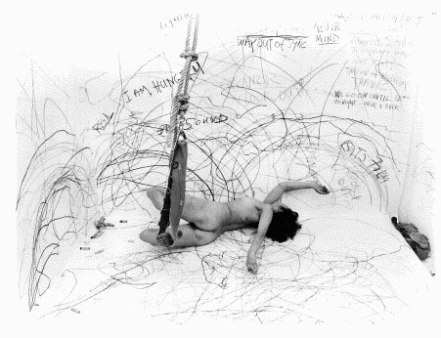
Up to and Including Her Limits 1973-76
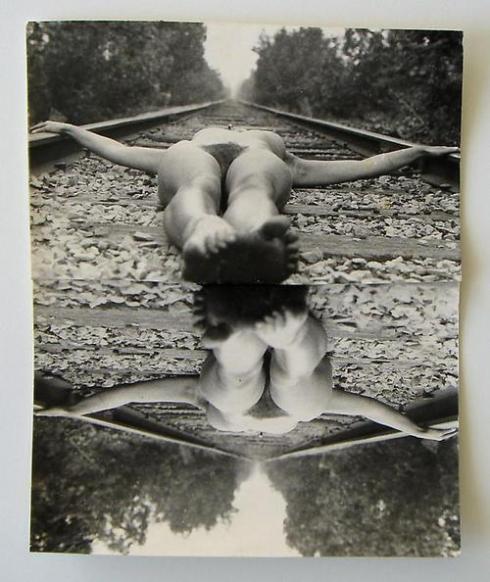
Parallel Axis Lying Down 1975.
Judy Chicago:
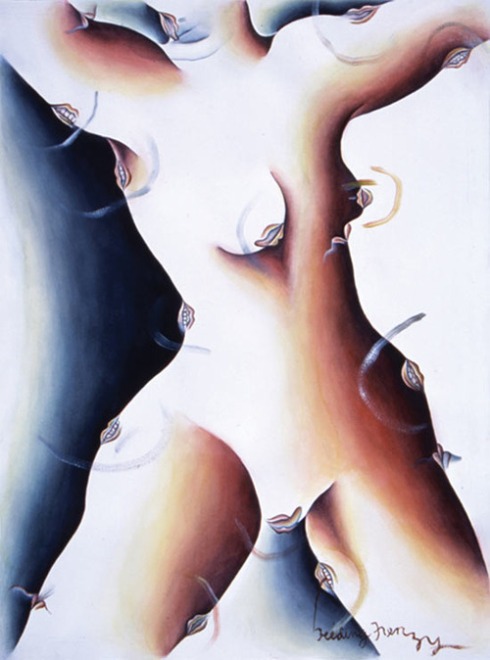
Feeding Frenzy 2002

From Delta Venus Series 2004
Sources:
http://en.wikipedia.org/wiki/Feminist_movement
http://en.wikipedia.org/wiki/Carolee_Schneemann
http://en.wikipedia.org/wiki/Judy_Chicago
http://en.wikipedia.org/wiki/The_Dinner_Party
https://www.brooklynmuseum.org/eascfa/dinner_party/home.php
